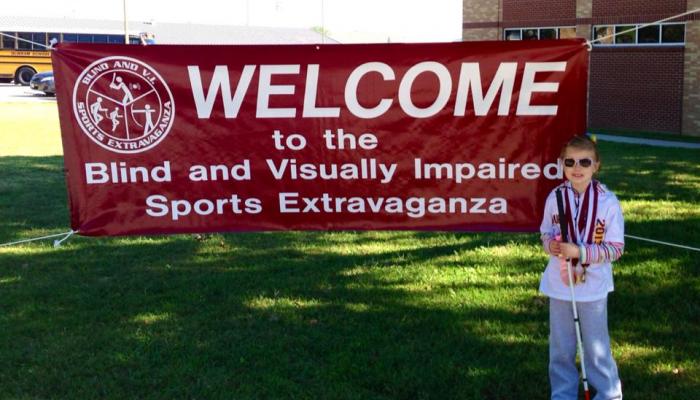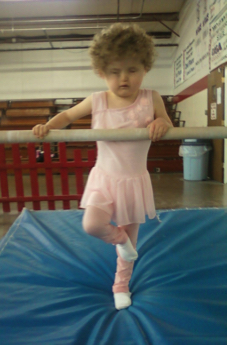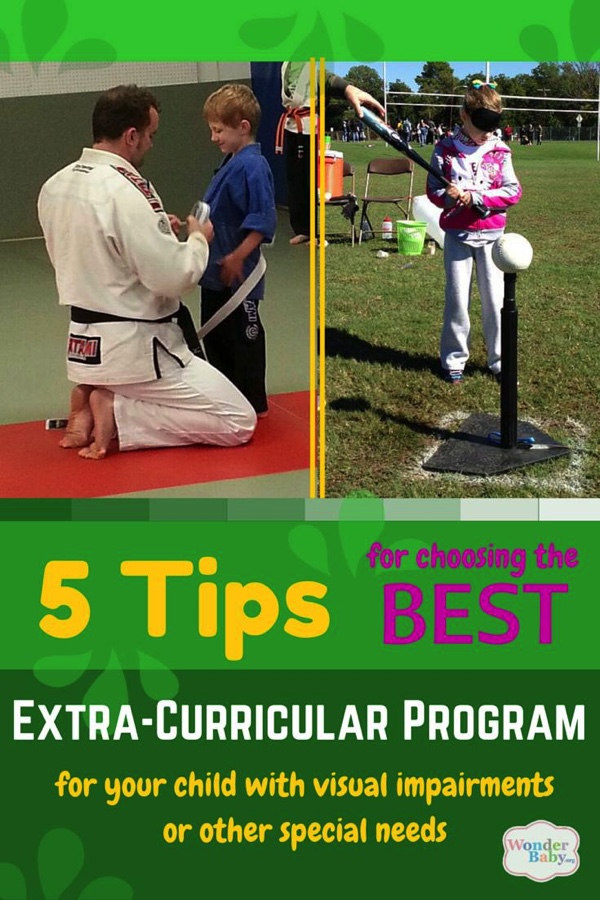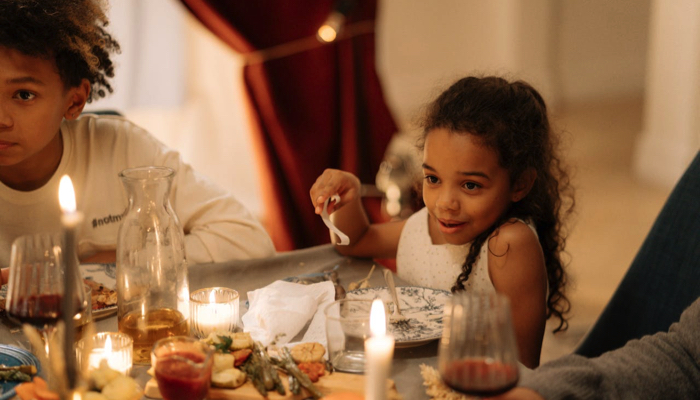5 Tips for Choosing the Best Extracurricular Program for Your Child with Visual Impairments

Finding the right program for your child with visual impairments can be a tedious job, especially if your child struggles with other disabilities or sensory impairments as well. There are many programs that were founded specifically for children with disabilities or special needs, while others have proven to be inclusive for kids of all abilities.
Your search results may be limited or nonexistent if you live in a rural area, or if you aren’t able to travel as needed. If so, maybe you could start your own program to include other families in the area who may be running into the same obstacle. Perhaps you’ve heard horror stories from other parents having to deal with administrators, coaches and even fellow parents who “feel your child may get hurt or won’t be able to effectively participate.” It’s true, those people exist, but try not to be discouraged. There are so many “wins” for children with visual impairments that would melt your heart, too.
Of course, finding the program that’s right for your child is understandably your main concern. So with some dedicated research and a little self-reassurance, you can find an extracurricular activity in which your child will enjoy and excel, even if it’s not right away! Don’t despair—it’s totally worth it!
1. Make a List
Make a list of every possible program your child could potentially participate in and don’t take account of the impact his/her visual impairment could make on the activity. Why? Because we sometimes make pre-conceived assumptions or expectations about what can or cannot be done, limiting options that could be winners. Be sure to consider travel time and possible event schedules—will they meet/play/practice weekly or several times a week, and for how long and where? Last, look over the final list and think about your child’s current interests. If your child is able to communicate his likes and dislikes, talk to him about what sounds fun. Take the top 3-5 activities and find out all you can about each one.
2. Meet with the Program Director and Staff
 Call to schedule a time to meet with the organizers of the program. Ask around to friends and family to see what you can find out about the activity, and make a list of questions you have for the coach or director. Don’t be shy! Definitely get details about logistics but don’t skip the harder questions about accommodations and accessibility that your child will require. You may find that they’ve included children with visual impairments before and have a plan, or maybe that they are unaware of exactly how a visually impaired child can take part in the program. Here’s where your advocacy skills take over! Meet with the people who will be with your child as well. They’re the ones that need to be comfortable and encouraging around your child so that everyone is on the same page.
Call to schedule a time to meet with the organizers of the program. Ask around to friends and family to see what you can find out about the activity, and make a list of questions you have for the coach or director. Don’t be shy! Definitely get details about logistics but don’t skip the harder questions about accommodations and accessibility that your child will require. You may find that they’ve included children with visual impairments before and have a plan, or maybe that they are unaware of exactly how a visually impaired child can take part in the program. Here’s where your advocacy skills take over! Meet with the people who will be with your child as well. They’re the ones that need to be comfortable and encouraging around your child so that everyone is on the same page.
3. Visit the Facility
Visit the venues of each of the top-ranked programs, including any practice facilities, buildings, or ball fields that your child will be attending if enrolled in the program. If transportation is involved, be sure to discuss and observe that as well. If possible, take your child to be introduced to the new area and let her explore both guided and independently. Once you’ve decided on a program, consider visiting the venue before the actual start date and do a run-through of what will be happening. It also helps to read children’s books about the activity and have your child talk to other kids about their experiences. This can help ease the fear or anxiety of trying something new, and can be extremely beneficial for children struggling with transitioning and executive functioning issues.
4. Be Honest with Yourself
Be honest with yourself about what you can expect from your child, and don’t be too hard on yourself either. If your child is still practicing independent travel techniques, don’t think he’s magically going to navigate a big new building without a sighted guide that first week. Also, be upfront and detailed with the people who will be taking care of your child during the activity, especially if and when you won’t be there. They need to know what to expect and what to do. Most likely (unless it’s a vision-specific program), they’ve never worked with a child with visual impairments and will need some direction. Hopefully they will welcome learning how to be the best coach or buddy for your child, but not everyone is going to be upfront with you about it out of fear of being seen incapable themselves. Remember to not be hard on yourself during the search and especially after the program begins, either. Too tired to cook on game nights or had to miss a practice? It’s okay! Your child is going to notice you being happy and energized next Saturday rather than be upset you were late this week. If you see things the program could be doing better, let them know in a kind and informative way. Most programs want to be the best they can be!
5. Be Brave
Be brave. It’s not your imagination that this all takes a lot of extra time and effort to do what seems like something that should be so simple and enjoyable from the start. It’s hard. It’s hard to think about how your child will do once she’s out on the field or on the stage at his first recital. You may imagine success and triumph some days. Other days you envision struggle or failure. Perhaps it isn’t just in your head and your child had a complete meltdown in front of the entire crowd, held up the game, and everyone stared. You could quit… but what if five or ten games later, she hits the ball, makes it to first base, and hears the crowd cheering her name as the biggest smile ever stretches across her face? There may be failure, there might be struggles, but with brave parents and some patience, there will be success!

Related Posts

Braille and Literacy, Toys, Visual Impairment
24 Braille Toys for Kids Who are Blind
Everything from alphabet blocks to raised line coloring pages and activity books to puzzles to card and board games... and so much more! And it's all in braille ready for...

Holiday Crafts and Ideas
Should Parents Lie to Their Kids About Santa Claus?
Should parents lie about Santa? Find out how to balance trust, magic, and holiday traditions right here!

Holiday Crafts and Ideas, Special Needs
5 Tips for a Peaceful Thanksgiving with Your Child with Disabilities
Thanksgiving can be a joyful yet overwhelming holiday, especially for families with children who have sensory, motor, or dietary needs.